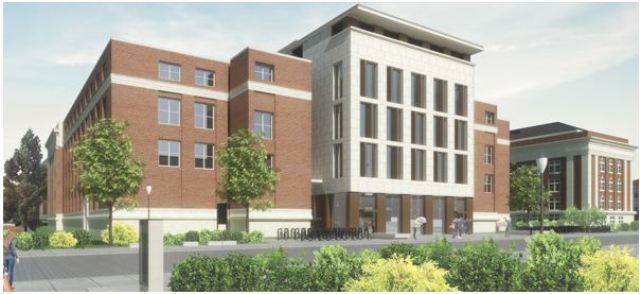Oct 5 2015
University officials broke ground on the renovation of the Tate Science and Teaching building (formerly Tate Laboratory of Physics) at a ceremony on September 30, 2015. The occasion marked the official beginning of the two-year renovation scheduled to be completed in Fall of 2017 that will transform the 89 year old building into the joint home of the School of Physics and Astronomy and the Newton Horace Winchell School of Earth Sciences.
 Courtesy Alliiance Architects
Courtesy Alliiance Architects
The public can view the renovation live on this web cam.
University of Minnesota Regent Richard Beeson opened the ceremony with remarks that linked the two of the academic disciplines that will share the new building by citing the research of Professor Al Nier whose work in mass spectrometry was seminal in physics and earth sciences.
Richard B. Beeson, Board of Regent; Thomas W. Devine, Board of Regents; Michael D. Hsu, Board of Regents; Abdul M. Omari, Board of Regents, Eric W. Kaler, President, University of Minnesota; Karen Hanson, Senior Vice President for Academic Affairs and Provost; Pamela Wheelock, Vice President, University Services; Suzanne Smith, Assistant Vice President, Capital Planning & Project Management; Steven L. Crouch, Dean, College of Science and Engineering, Ronald Poling, Head, School of Physics and Astronomy; and Donna Whitney Head, Newton Horace Winchell School of Earth Sciences were on hand to shovel dirt for the ceremony.
The building will include 29 teaching labs and 10 research labs for physics and astronomy courses and four teaching labs and 16 research labs for earth sciences courses.
About 350 faculty, post-doctoral researchers, graduate students and visiting researchers will be housed in the building, and more than 2,000 students will take classes there each day.
The renovation also includes a remodeled Van Vleck auditorium, which will serve as a main location for classes and public events. The renovation will preserve the building’s architectural character as part of the Northrop Mall Historic District.
Source: http://www.physics.umn.edu/